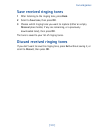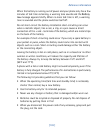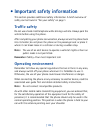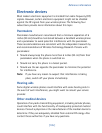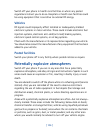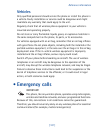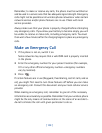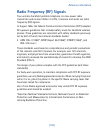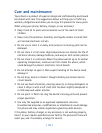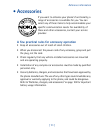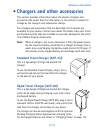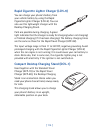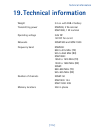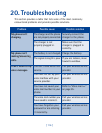[ 109 ]
Reference information
Radio Frequency (RF) Signals
Your wireless handheld portable telephone is a low-power radio
transmitter and receiver. When it is ON, it receives and sends out radio
frequency (RF) signals.
In August 1996, the Federal Communications Commission (FCC) adopted
RF exposure guidelines that included safety levels for handheld wireless
phones. Those guidelines are consistent with safety standards previously
set by both U.S and international standards bodies:
• ANSI C95.1 (1992)*, NCRP Report 86 (1986)*, ICNIRP (1996)*, and
RSS-102 issue 1.
Those standards were based on comprehensive and periodic evaluations
of the relevant scientific literature. For example, over 120 scientists,
engineers, and physicians from universities, government health agencies,
and industry reviewed the available body of research to develop the ANSI
Standard (C95.1).
The design of your phone complies with the FCC guidelines (and those
standards).
For body worn operation, to maintain compliance with FCC RF exposure
guidelines, use only Nokia approved accessories. When carrying the phone
while it is on, place the phone in the specific Nokia carrying cases that
have been tested for compliance.
Use of non-Nokia-approved accessories may violate FCC RF exposure
guidelines and should be avoided.
*American National Standards Institute, National Council on Radiation
Protection and Measurements; International Commission on Non-
Ionizing Radiation Protection.



